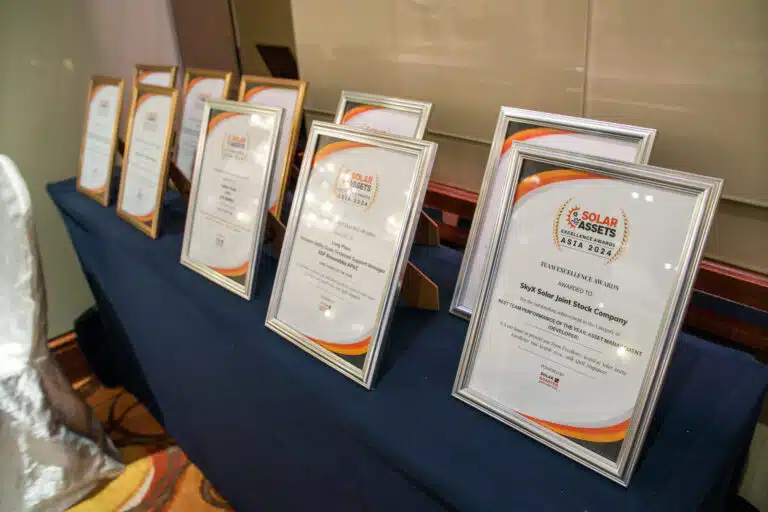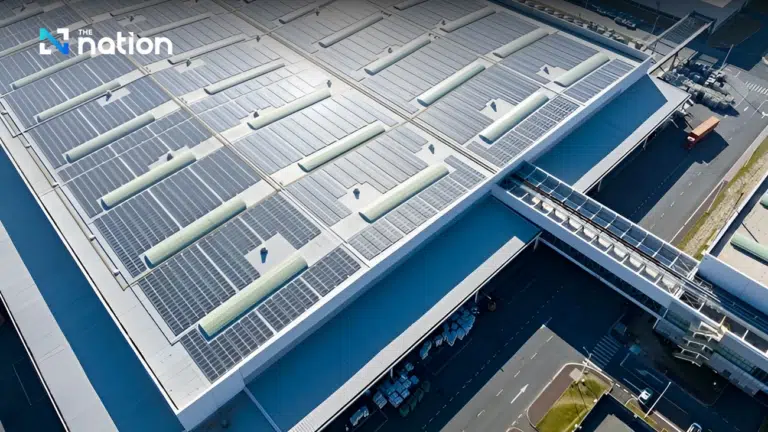Investors are showing a tendency to seek out green industrial zones, but supply remains limited due to high investment capital and a lack of interest from management companies.
Aiming to be the most sustainable facility within the group, Lego’s billion-dollar factory in Binh Duong is designed with solar panels on the roof and a solar power farm on adjacent land. The energy from these two sources will fulfill the factory’s total annual energy needs.
Speaking at the groundbreaking ceremony in November 2022, Lego CEO Niels B. Christiansen stated that one of the reasons for choosing Binh Duong was its excellent infrastructure and the fact that VSIP – the developer of Vietnam-Singapore Industrial Park III – where the factory is located, could support them in developing solar power.
Lego isn’t an isolated case. Observing the preferences of foreign investors, Mr. John Campbell, Deputy Director and Head of Industrial Services at Savills Vietnam said that 4-5 years ago, tenants inquiring about industrial land weren’t very interested in sustainability factors like LEED-certified factories or the possibility of using solar power. But things are different now.
“We’re receiving many requests from clients interested in sustainable industrial parks, particularly from European countries like Germany and France, and some from the US,” he said Mr. John’s observations align with a survey conducted by the European Chamber of Commerce in Vietnam (EuroCham) in Q3.
Specifically, 80% of European businesses surveyed believe that adhering to ESG (a set of standards measuring environmental, social, and governance sustainability) is highly or moderately important. At a recent event, Warrick Cleine, Chairman, CEO, and Managing Partner of Deals, Tax & Legal at KPMG Vietnam and Cambodia, mentioned that the company’s clients have a strong awareness of ESG.

Businesses involved in providing solutions to green industrial parks are also seeing the demand. Operating and developing over 100 MWp of rooftop solar power, Mr. Samresh Kumar, Chairman and CEO of SkyX Solar, said that customers, especially those in Europe, are demanding more from suppliers about the use of renewable energy.
“Therefore, future factories will be forced to use renewable energy,” Mr. Samresh Kumar predicted. According to him, currently, only about 20% of the potential of rooftop solar power has been exploited, with more than 16,000 MW unused. Installing solar power for factories in industrial parks does not require much land area, does not cause any impact, does not feed electricity back to the grid, and does not require government funding. “The potential is huge,” he said.
According to the Vietnam Real Estate Association, there are about 563 industrial parks nationwide. About 397 have been established, 292 are in operation, covering an area of over 87,100 hectares. There are no complete statistics on green, sustainable, or ecological industrial parks. The existing ones are based on different recognitions or standards.
The Ministry of Planning and Investment alone has set a target that by 2030, 40-50% of localities will have plans to convert existing industrial parks to ecological ones, and 8% to 10% of localities will have plans to build new ecological industrial parks.
The United Nations Industrial Development Organization (UNIDO), which cooperates with the Ministry of Planning and Investment, describes an ecological industrial park as a place where businesses seek to achieve higher environmental, economic and social efficiency through cooperation in exchanging raw materials, energy, water and by-products, thereby promoting comprehensive and sustainable development.
Although the names are different, the overall level of development of sustainable industrial parks is still not high. “The scale of green industrial parks is not large enough. Most do not take this issue seriously. Only a few are starting to change the trend,” said Mr. John Campbell.
The names that are interested can be counted on the fingers. A few years ago there was Deep C. This year, Shinec’s Nam Cau Kien Industrial Park (Hai Phong) has emerged. More than 40% of the land area here is used for parks, trees, public areas and infrastructure. The project also measures and monitors all wastewater, emissions, dust and waste 24/7.
Or as with VSIP, after successfully attracting Lego, at the beginning of September, the company started construction of the first phase of VSIP Can Tho Industrial Park with an area of over 293 hectares in the direction of smart – sustainable.
However, why are there many talks about green industrial parks but few examples of implementation in practice?
The first is the difficulty in terms of cost. According to Shinec Chairman Pham Hong Diep, the investment cost for an ecological industrial park is 30% higher than that of a conventional industrial park. However, the company is pursuing this path because of its ambition to achieve carbon neutrality by 2030.
Second, existing industrial parks are slow to change. According to Mr. Samresh Kumar of SkyX Solar, new industrial parks often want to deploy solar power to attract companies. One of their strategic partners is YSL Group (Korea) which is developing Green Park Vinh Phuc industrial park according to green – smart standards.

As for some existing industrial parks, Mr. Samresh Kumar said that the company is facing some challenges when trying to approach them. “Some zones (in the East) have factories in them that want to use solar power to provide additional energy for production. However, the industrial park has not yet allowed and cooperated in the implementation, because they have their own energy supplier,” he said.
In addition, there may be some other market and policy factors. Industrial parks in Vietnam are currently quite popular, with an average national occupancy rate of over 80%, and some places like the key southern provinces reaching 91%. According to Savills, rents are also continuing to improve.
In addition, in terms of the goal of carbon neutrality by 2050, the specific legal frameworks to achieve it are not yet complete, according to Ms. Megan Lawson, General Director and Country Director of ERM Vietnam, a UK-based sustainable development consulting firm.
Therefore, considering both market and policy factors, there is not much pressure to develop green industrial parks. However, the positive point is that foreign capital flowing into Vietnam is increasingly accompanied by requirements for ESG standards that are higher than the current local regulations, according to Ms. Megan.
“In order to access these sources of capital, we need to go further, develop better, understand the gap between domestic and international standards and find ways to fill that gap,” she said. That could be one of the motivations for industrial parks to soon turn greener in the future.







